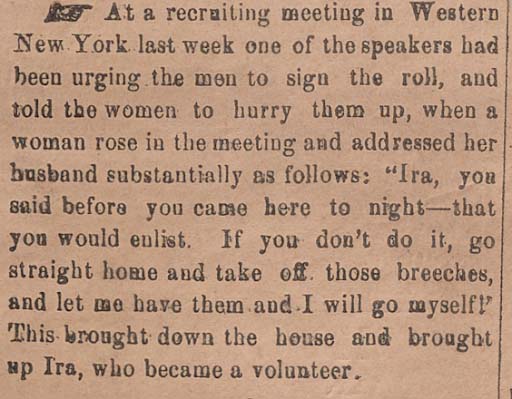Civil War on the Front Line and at Home
Suggested Teaching Instructions
Students can complete this activity on Consider the Source or they can utilize these attached Google links:
https://docs.google.com/document/d/1gPUWDZbKIng6wRAw4aqmsG3v_1pUEnVqGQBNdvrRkgA/edit
*Lesson works best with the attached HIPPO organizer
https://docs.google.com/document/d/1nZ-gIXQ7sEjAh4YcxXqXOr6axlkEjQUiiUOskfIdGrs/edit
https://docs.google.com/document/d/1IhgNdfgXddrtZILby0PKt-T4Qwn7MZ4BuVGIbK39EXQ/edit
Title: Civil War on the front line and at home
Overview: Using documents from the Northport and Oysterponds Collection, students will analyze documents from the Civil War that showed what conditions were like as a soldier at what life was like on the homefront. Focusing on Close Reading and Cooperative learning, teachers will demonstrate and guide students through analyzing primary sources.
Goal: Introduce students to what conditions were like for soldiers and what life was like for people back home.
Objectives: Students will be able to explain what soldiers were experiencing and how people back at home were helping the war effort.
Investigative (Compelling) Question: How was the Civil War affecting soldiers and people back at home?
Time Required 1 class period, 45 minutes
Recommended Grade Range 7th & 8th
Subject: Social Studies
Standards: 7.8e The Civil War affected human lives, physical infrastructure, economic capacity, and governance of the United States.
A. Gathering, Interpreting, and Using Evidence- 4. Describe and analyze the arguments of others, with support. 5. Make inferences and draw general conclusions from the evidence.
B. Chronological Reasoning-1. Identify how events are related chronologically to one another in time, and explain the ways in which earlier ideas and events may influence subsequent ideas and events 8. Identify patterns of continuity and change as they relate to larger historical processes and themes.
Credits: John Heeg
PREPARATION
Materials Used:
Resources Used:
-
Suffolk Times: Thursday, August 28, 1862, Greenport, NY
PROCEDURE
Description of Procedure:
-
Connect:
Setting the stage: Review the causes of the Civil War and why men would volunteer to fight in the war. The teacher will write responses to the Do Now question on the board.
-
Wonder:
Read aloud: The Teacher will read a letter written by Northport Soldier Frank Sammis to his friend Susan. During the reading, the teacher will stop and ask the following questions:
-Who is the audience?
-Why is he writing the letter?
-What does he miss about home?
-What kind of relationship do you think Frank and Susan have?
-Why is he writing the letter?
-How does he feel about being a soldier?
-Was he drafted or did he enlist? How do you know?
-
Investigate:
Cooperative Learning Assignment: Prior to students looking at the documents the teacher will say that today we are going to look at documents from the Civil War. The documents will give you insight into what people were doing on the homefront while soldiers were off fighting in the war. Students will be placed in groups of 4. Each student will receive a different document and the HIPPO graphic organizer. For the first five to ten minutes, students will analyze the document assigned to them and fill out the graphic organizer. When students are done analyzing the document, each student will then share their findings one at a time with the people in their group. The rubric can be used to assess how students work together in groups.
-
Construct:
Whole Class Discussion. After each student has taught their documents to the students in the group the class will then discuss what they have learned.
After the discussion students will write a letter back to the soldier using the documents that they have analyzed to tell Frank about what people are doing back home to support the war effort.
-
Reflect:
As part of the evaluation the students will identify and discuss the historical thinking skills they used to analyze the documents.
Extensions (if applicable)
EVALUATION
Evaluation:
Students will write a letter back to Frank Sammis. The rubric will be used to assess student work.




















